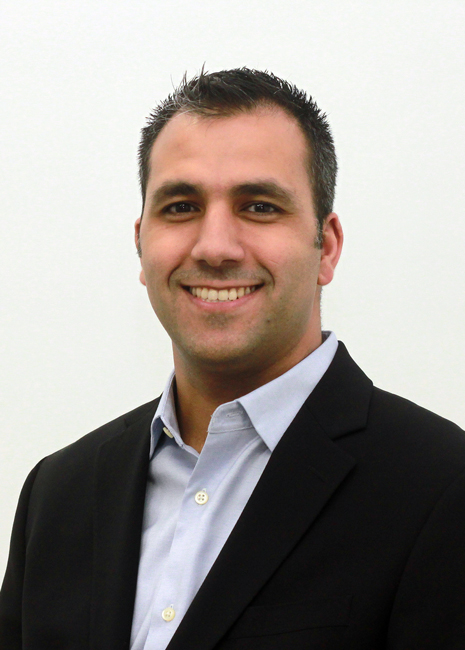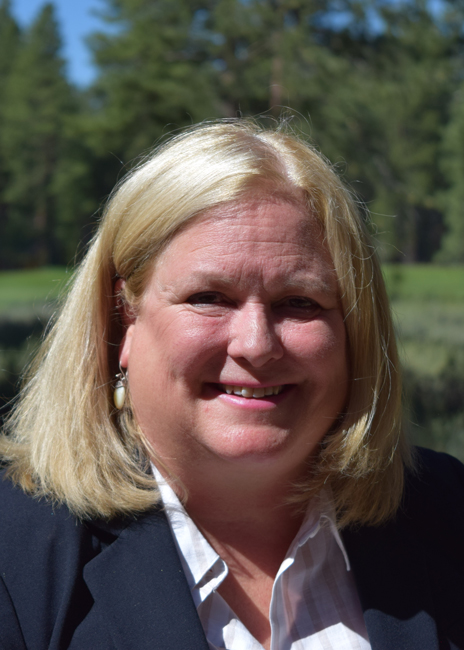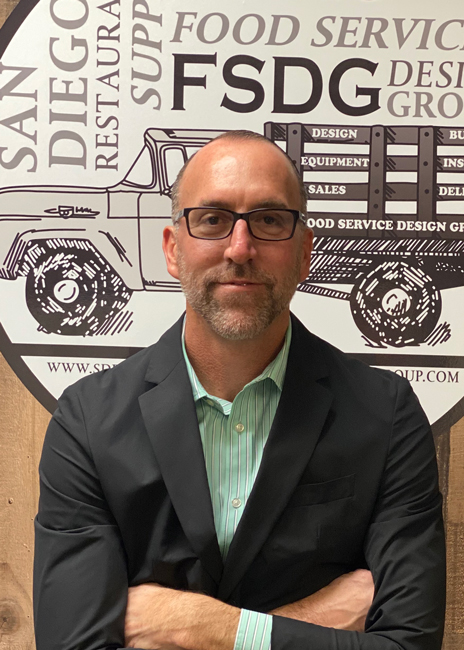Four business leaders share a few of the ways in which they’ve been working to ensure that they come out of the pandemic stronger and better positioned than they were when it started.
Former Chicago mayor and White House chief of staff Rahm Emanuel famously suggested never letting a serious crisis go to waste when the country was dealing with the economic crisis of 2008. He noted, “It’s an opportunity to do things you think you could not do before.”
COVID-19 has certainly been a serious crisis for the foodservice industry, one that has pushed every company to embrace or create opportunities to do things differently. Indeed, the tenacity shown and transformative moves made by players throughout the industry since March 2020 have been extraordinary. Yes, restaurant closures are still happening and will likely continue. Pain is still being felt — acutely, by many — and uncertainty continues to loom large for many segments. But most businesses figured out very early in the crisis that new realities demanded new strategies, and a willingness to take stock and quickly pivot toward things they may have thought they couldn’t do or never felt compelled to do.
Pandemic strategies embraced by restaurant operators have been most visible, focusing sharply on maintaining or growing volume via sales for off-premises and/or al fresco consumption. Adhering to local and national government guidelines has consumed businesses in every segment, as has embracing technology, operations and design solutions that enable contactless ordering, payment and the final handoff to customers. With dining rooms shuttered or at limited capacity, many operators have taken the opportunity to refresh, remodel, upgrade HVAC systems and/or replace inefficient kitchen equipment.
But operators aren’t the only ones who’ve been pushed to innovate, pivot, reinvent and rethink. Supply chain partners, from designers and consultants to dealers and distributors, have worked hard to support their communities and help market their foodservice clients. And many have looked inward and tackled projects that otherwise might not have gotten their time or attention. Here, four business leaders share a few of the ways in which they’ve been working to ensure that they come out of the pandemic stronger and better positioned than they were when it started.
 Jameel Burkett, President and CEO, Burkett Restaurant Equipment & Supplies, Perrysburg, Ohio“We believe in a philosophy of what we call ‘the three Rs’. That is, at different times of our lives, there’s going to be a need to reset, refocus and then resume growth,” says Jameel Burkett, president and CEO of Toledo-area dealership Burkett Restaurant Equipment & Supplies. “When times are good, everyone’s constantly looking for you to perform, whether it’s bankers, shareholders or employees. But when COVID-19 hit, it gave us an opportunity to look at things a bit differently and to work on some projects that we feel will make us stronger.”
Jameel Burkett, President and CEO, Burkett Restaurant Equipment & Supplies, Perrysburg, Ohio“We believe in a philosophy of what we call ‘the three Rs’. That is, at different times of our lives, there’s going to be a need to reset, refocus and then resume growth,” says Jameel Burkett, president and CEO of Toledo-area dealership Burkett Restaurant Equipment & Supplies. “When times are good, everyone’s constantly looking for you to perform, whether it’s bankers, shareholders or employees. But when COVID-19 hit, it gave us an opportunity to look at things a bit differently and to work on some projects that we feel will make us stronger.”
Turning their gaze inward, Burkett and his team used time during the pandemic to evaluate key aspects of the business, encompassing people, products, processes and partnerships.
After being forced to lay off 40% of employees last spring, for example, Burkett developed an initiative he calls Right People, Right Seats. “As we started bringing people back, we wanted to be sure that we could answer, ‘Do we have the right people in the company, and if so, do we have them in the right seats?’
“Often, when you’re in the whirlwind of growth, you end up building your business around the people that you have,” Burkett explains. “Sometimes it’s not the right structure, but you just keep moving and working off of their strengths. We took a step back to look at what everyone’s doing, whether they’re doing the things they should be doing, whether we’re building on their strengths. In some cases, we felt we could move people into different roles in which they can grow personally and professionally and add more value.”
Hand in hand with that initiative, Burkett focused heavily on training and development. The sales organization, for example, was targeted for retraining. “When orders are flowing in, it can be easy for sales to become almost like a glorified customer service team. But during tough times, you have to get back to basic sales, to the fundamentals of building relationships, consulting and value-added selling,” he says. “We took the time to do that type of training again.”
Products, too, came under close scrutiny. In 2020, Burkett completely rebuilt its inventory management system and evaluated every SKU to determine if the right mix, stock levels and pricing targets were being hit.
To improve merchandising, his team reorganized the company’s 10,000-square-foot showroom and online catalog to update and enhance the shopping experience. And, with most transactions happening virtually, Burkett’s long-planned drive into online sales began to gain traction.
Now back at full employment levels, Burkett adds that embracing the virtual business environment reaches far beyond sales. He has focused on creating and managing a hybrid workplace model that keeps employees connected and productivity high, despite the fact that 80% of associates were still working from home as of mid-December. “Even though most aren’t in the office, we maintain an 8-to-5 work schedule; we just do it virtually,” he says. “That’s worked really well for us, and we’ve seen our teams come together culturally stronger than ever before.”
That’s thanks in part to a program created back in mid-March called “daily huddles.” The 30-minute team or department meetings take place every morning via video calls. The sales team, for instance, gathers to review successes of the prior day and plans for the upcoming day. And each huddle ends with an agenda item that Burkett says has developed into a great training opportunity. “We call it Help Needed From the Room. If someone is stuck on something or is facing a particular challenge, they share it with the group,” he says. “Chances are that if one person brings it up, others have had that same issue and can offer insights into how they handled it.”
All of these projects, Burkett adds, have not only gotten the company through, but they have fundamentally improved it and become part of its new normal. “We set a goal that we want to be ahead of the curve when the threat of the virus passes and business rebounds,” he says. “We want to outpace the industry, so we’re thinking and acting not just for today, but for tomorrow.”
 Carolyn Ruck, Principal and Co-Owner, Ruck-Shockey Associates, Truckee, CalifThroughout the pandemic, consulting firm Ruck-Shockey Associates has seen a fairly steady stream of business. That’s due in part to its specialization in healthcare and other noncommercial industry segments and in part to the diversity of its services, according to principal and co-owner Carolyn Ruck. The firm’s offerings span food and nutrition services, environmental services, interim management, recruiting and technology platform support. Its team of consultants works on projects across the country.
Carolyn Ruck, Principal and Co-Owner, Ruck-Shockey Associates, Truckee, CalifThroughout the pandemic, consulting firm Ruck-Shockey Associates has seen a fairly steady stream of business. That’s due in part to its specialization in healthcare and other noncommercial industry segments and in part to the diversity of its services, according to principal and co-owner Carolyn Ruck. The firm’s offerings span food and nutrition services, environmental services, interim management, recruiting and technology platform support. Its team of consultants works on projects across the country.
“When the pandemic hit, we were doing several implementations. One very large healthcare system, for instance, was transitioning from contract to self-op foodservice,” Ruck says. “That couldn’t have been put on hold. For another client, we’d begun operationalizing a new cook-chill kitchen, and that process continued uninterrupted. We do a lot with healthcare, and hospitals are working to keep projects going. Even other types of clients, such as corporate and campus dining, still have work for us. We help them through the RFP process, for instance, and we’ve been very active in projects geared to positioning clients for success in the post-pandemic future. Some of that is focused on reassessing operations for enhanced sanitation, safety and tighter cost control, but whether it’s for patients or guests, creating great customer experiences remains a very high priority.”
While helping clients rethink and reimagine their operations and processes during the pandemic, Ruck and her partner, Georgie Shockey, took the opportunity to do the same for their own business. They undertook a deep-dive review of their mission statement and values, and an honest assessment of how effectively the company communicates those. They also gave marketing, business development and value-added services fresh attention.
“It’s been a good time for us to reexamine what our goals are, what we want to focus on in the future and how we’re going to go about doing that,” Ruck says. “We’ve been in business for 23 years, so we embraced the opportunity to relook at what we’re doing and how we want to move forward to provide the right services to clients as well as to expand our base of business.”
During the pandemic, Ruck-Shockey conducted surveys with existing and potential customers to learn what’s important to them, gleaning insights for future strategic planning. And the duo stepped back to look at their business through a very wide lens. “As we plan for the future, who knows? We may even look into doing something with large restaurant groups, particularly in the areas like regulatory compliance, food safety, sanitation, HACCP plan writing and other operational areas that we cover for noncommercial clients,” Ruck says.
Ruck-Shockey is also working to build upon a value-added service concept that it debuted just before the pandemic hit. Simply called “Learning,” it offers a series of online courses developed to help operators expand their leadership capabilities and improve staff training. Initially developed on a proprietary basis for individual clients, Ruck says her team is now working to implement the Learning program on a broader scale, making courses available to anyone via subscriptions through the company website.
“It’s still in development, but we think there’s great potential in it,” Ruck notes. “We’re taking time now to really look at how we can develop the concept, take it in multiple directions and ensure that it adds value across all of our platforms.”
 Matt Barnes, LEED AP, Senior Design Consultant, Great Lakes Culinary Designs, Southfield, Mich.
Matt Barnes, LEED AP, Senior Design Consultant, Great Lakes Culinary Designs, Southfield, Mich.
Great Lakes Culinary Designs (GLCD), established in 2018 as a division of equipment and supplies dealer Great Lakes Hotel Supply, has fared well during the pandemic. Business is up, and significantly so, according to Matt Barnes, senior designer and co-manager of the division. “On the design side of our business, we’re up maybe 30% in 2020 over 2019,” he says. “It’s been very surprising, but a lot of restaurant folks are starting new projects, and a lot of projects that were put on hold earlier in the pandemic have since come back to life.”
As a result, Great Lakes’ design team has had to meet the dual challenges of handling increased business volume and, at the same time, creating and adjusting to new ways of getting business done. Internally, the division’s biggest pandemic projects focused on communication and training, according to Barnes, who says changes forced by COVID-19 have actually significantly improved performance in both areas.
Like everyone else, the team quickly shifted to working remotely and relying on video conferencing to stay connected and keep projects moving. “Everyone’s a little sick of video meetings by now, but they’ve been invaluable, and we’re actually a lot more productive,” Barnes says. “We’re a pretty tightknit group, which is great, but when we’re all in the office together, it’s easy to get sidetracked. With video conferences, we’re much more focused. It’s, ‘Here’s what I need. What do you think? How do we do it?’ and you’re done. We can talk quickly, share screens without getting up to wander over to someone’s work area, and collaborate very efficiently.”
Clients, too, have embraced GLCD’s shift to tech-based, remote work solutions. The ability to share screens among team members and clients in remote locations, in particular, has been a boon.
“Before the pandemic, most restaurant clients were used to doing everything face to face,” Barnes notes. “Now, they really see the benefits of working with us remotely. We can put the plan on screen, share it, discuss it, make notes right on it. We started using tablets, so we can put the PDF of the drawing up and write directly on it. We’re working on a large high school project, and the whole design team has a weekly three-hour meeting where they’ll share the 3D model and walk through the space virtually, making adjustments in real time, with everyone seeing and responding to the same thing on the screen. The project leader can just send a summary with images of all the different things we talked about to everyone on the call. So, communication has been a major focus for us during this, and it’s so much better now, both internally and with clients, than pre-pandemic.”
Training has been a major focus as well. With the design division doing brisk business, Barnes and GLDC co-manager Joel Schultz are taking time now to hire and train new associates in anticipation of even more rapid growth post-pandemic. Effective new remote training solutions have been created to meet the moment.
“We’re trying to streamline the process and take the same idea of screen sharing into our training programs,” Barnes says. “I have two large, 32-inch screens and my laptop on my desk, so I can have someone who’s in training working on a sample project on a screen next to me. I can provide guidance and answer questions while they and I continue to work. Normally, they’d be sitting on the other side of the office and would need to get up to find you every time they had a question — or just might not have asked because they didn’t want to bother you.”
Another new project designed to enhance GLCD’s training program is a catalog of videos and online classes compiled to help trainees learn the basics of critical tools such as building information modeling (BIM) and computer-aided design (CAD) software. New hires work their way through the carefully curated collection of videos, typically doing so with Barnes on one of his screens, available to provide guidance and answer questions in real time as needed.
“We all know that this pandemic isn’t going to last forever,” Barnes notes. “We’re taking the opportunity now to focus on hiring and training so that we’re fully prepared to handle what comes next.”
 Josh Egan, President and CEO, San Diego Restaurant Supply, San Diego
Josh Egan, President and CEO, San Diego Restaurant Supply, San Diego
When Josh Egan assumed ownership of San Diego Restaurant Supply (SDRS) and its Foodservice Design Group division last January, the business plan he formulated at the time included a few minor tweaks for the 62-year-old dealership, which he joined in 2005 and served as vice president of since 2017. Business was good, and he didn’t see the need to fix a lot of things.
Three months later, COVID-19 hit, and with it came the realization that minor tweaks wouldn’t cut it. Survival would hinge on thinking bigger and acting quickly to shore up vulnerabilities, exploit strengths and mine the market for new opportunities. Egan and his team worked to do all the above, and in the process, they saw the company not only survive but grow. SDRS ended 2020 with revenues up more than 15% over the prior year.
Their projects encompassed a rebranding initiative, a new software program, refocused business development and stepped-up marketing to both current and potential new customers. Community service became a priority as well, with SDRS reaching out to partner with three local nonprofit organizations.
With its sales floor and institutional sales divisions hit hard early in the pandemic, Egan leaned heavily into SDRS’s design and construction capabilities to right the ship. “The past year has reinforced the fact that our model works,” he notes. “Two of our revenue streams took a nosedive at first, but we had a lot of design-build work in the pipeline. Except for a few delays on a few projects, most of that stayed true and kept us busy.”
Among the biggest of those projects were a major foodservice expansion at the San Diego Zoo’s new Children’s Zoo, a remodel of a large resort hotel, multiple hospital kitchens, a Triple-A baseball stadium, and a 10,000-square-foot restaurant and brewery remodel for a local multiunit operator. With its tourism-driven local restaurant market down, SRDS also shifted its focus to San Diego’s strong military market, securing projects at local Navy and Marine bases.
“Existing relationships, many with large developers and the military, but also with individual operators who we took the time to reach out to and stay engaged with, kept us afloat and our people working,” Egan says. “We just had to be ready to switch gears and seize opportunities wherever we could.”
Finding new opportunities also became mission critical. “We went back to business development 101, to making lists, staying focused and attacking,” Egan says. “We asked ourselves, ‘Who are we not talking to?’ One segment that was never really in our wheelhouse, for example, was senior living. We went after it and landed a big account with a company that operates communities in several states. We’re now working on designs and quoting new equipment for eight different projects with them. It’s a segment that we feel has great potential, in part because it’s growing and in part because many operators are now looking to remodel and shift their foodservice away from buffets and self-service.”
Egan has also devoted time and energy during the pandemic to tackle some internal projects that are helping to reintroduce SRDS under his ownership and to improve operational efficiencies. New accounting and purchasing software replaced the previous 30-year-old systems. And new branding was introduced, including a new logo that projects an updated look while also paying homage to the company’s heritage. The logo now appears on employees’ hats, sweatshirts and T-shirts.
“The truck in the logo was our first delivery truck, which we still have in our warehouse,” Egan notes. “Employees love the new branding, and we had great support from some of the manufacturers who helped us to finance it. It’s been a real morale booster during a time when everyone’s been so anxious.”



